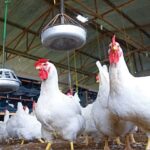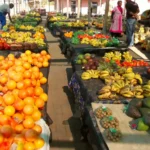1.0 Background
The Federal Government of Nigeria has received a facility from the African Development Bank (AfDB), the International Fund for Agricultural Development (IFAD), and the Islamic Development Bank (IsDB) to finance the cost of the Special Agro-Industrial Processing Zones Program (SAPZ), and intends to apply part of the proceeds towards carrying out various consultancy services. The SAPZ Program is being implemented in the seven (7) States and the Federal Capital Territory (FCT). The States are Cross River, Imo, Kaduna, Kano, Kwara, Ogun, and Oyo.
The overall development objective of the SAPZ program is twofold: (1) Support the development of SAPZ in high food production areas to supply the domestic food market and create exportable surpluses; and (2) Capacitate smallholder farmers, small agro-processors, and traders, and community-based service providers, including women and youth; to take advantage of the market demand created by the SAPZ to sustainably enhance their income, household food security and resilience to climate change.
The program has four components, namely:
➢Component 1: Infrastructure Development and Management for Agro-Industrial Hubs (AIHs). Under this AfDB-led component, the program will support the FGN in developing and setting up SAPZs in high-potential states.
➢Component 2: Agricultural Productivity, Production, Market Linkages, and Value Addition in SAPZ Catchment Areas. Under this component, SAPZ’s objective is threefold: (i) support smallholder farmers and small operators to increase their productivity/production and capacity to add value to raw materials on a profitable and environmentally sustainable basis; and (ii) link them to the additional market outlets offered by the Agro-Industrial Hubs (AIHs), off-takers supplying the local and national market who operate in the target area, and small processors/traders supplying the local markets, including primary processors operating in the Agricultural Transformation Centres (ATCs); iii) enhance the resilience and adaptive capacity of smallholder farmers to climate change..
➢Component 3: Policy and Institutional Development Support. The objective of component 3 is to support the development of enabling policies, legislation, and regulation for SAPZs in Nigeria to create a conducive business environment for private sector investment and to address inefficiencies and market failures in agricultural value chains.
➢Component 4: Program Coordination and Management. This component will ensure that the program is efficiently and effectively managed to achieve expected results.
In line with the objectives of improving food security and supporting smallholder farmers in Kano and Ogun States, various agricultural interventions have been implemented, including the provision of inputs, capacity building, and access to extension services during the wet and dry farming seasons. To evaluate the effectiveness of these interventions and provide evidence-based recommendations, a comprehensive plot area measurement and yield assessment of beneficiary farmers is necessary.
The yield survey will help ascertain the actual crop output per hectare achieved by beneficiary farmers during the wet and dry seasons, and compare this with baseline and expected yield targets. The findings will contribute to performance monitoring, impact evaluation, and future program planning.
2.0 Objective
The overall objective of this assignment is to conduct a the plot area measurement and yield assessment of the supported crop farmers for the wet and dry seasons in Kano and Ogun State.
The specific objectives include:
Determine the plot area cultivated by SAPZ beneficiary farmers during the 2025 wet and dry seasons in Kano and Ogun States.
Obtain the geo-coordinates of the plots of surveyed beneficiary farmers and geo-reference them on google earth
To assess crop yields (rice, groundnut and tomato in Kano and cassava and rice in Ogun) per designated land area cultivated by the project beneficiary crop farmers.
To compare yield performance between wet and dry season, and with the general state yield average as reported by other state agencies and NAERLS.
To evaluate factors influencing yield variations including input use, extension support, and farming practices.
To identify challenges and opportunities to improve productivity in the program areas.
Kindly down the attached for more details please.






Recent Comments